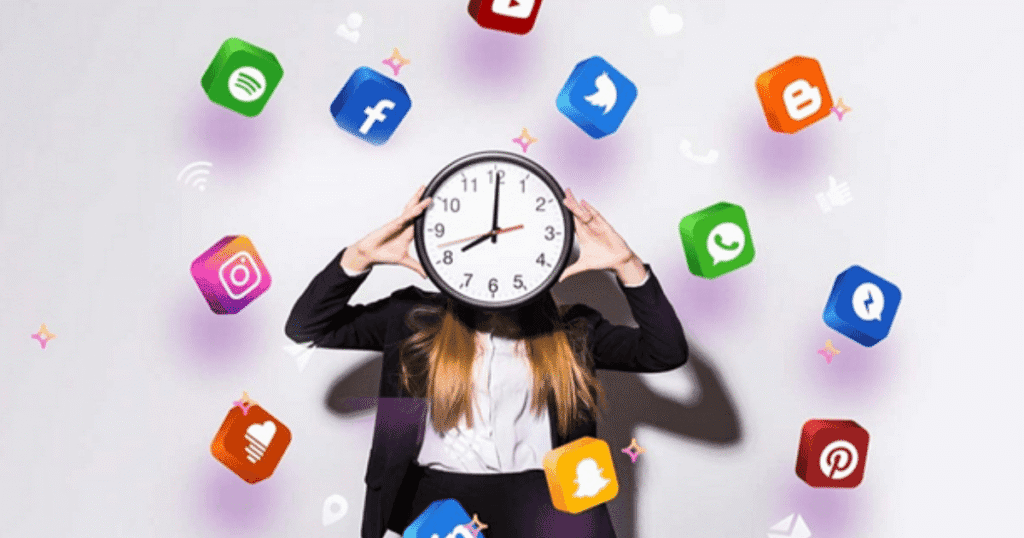
The digital media landscape is undergoing its most radical transformation yet. By 2025, AI-generated content, social platforms as entertainment hubs, and VR immersion will have dismantled traditional media hierarchies. No longer just complementary channels, these technologies are rewriting the rules of creation, distribution, and monetization.
1. What is Digital Media?
Digital media refers to any content—text, video, audio, or interactive experiences—that is created, distributed, and consumed through electronic devices. Unlike traditional media (TV, radio, print), digital media is:
✔ On-demand (streaming, downloads)
✔ Interactive (social media, gaming, AR/VR)
✔ Algorithm-driven (personalized feeds, AI recommendations)
✔ Globally accessible (no geographical limits)
Types of Digital Media in 2025:
| Category | Examples |
|---|---|
| Social Media | TikTok, Instagram Reels, X (Twitter), LinkedIn |
| Streaming & Video | YouTube, Netflix, Twitch, Disney+ |
| Audio & Podcasts | Spotify, Apple Podcasts, Clubhouse (AI-enhanced) |
| Gaming & Metaverse | Fortnite, Roblox, VR Chat, Meta Horizon Worlds |
| AI-Generated Content | ChatGPT articles, AI influencers, synthetic media |
2. AI: The Invisible Architect of Digital Content
By 2025, over 60% of routine digital content—from news articles to video scripts—will be AI-generated. Tools like ChatGPT-5 and Google’s Gemini will enable:
-
Hyper-personalized narratives (e.g., Netflix tailoring show plots to individual viewers)
-
Instant localization (AI translating and adapting content for global audiences in real-time)
-
Ethical dilemmas as deepfake ads and synthetic influencers blur authenticity lines.
Beyond ChatGPT: How Mistral AI Open Models (and Logo) Are Shaping the Future
How Safe is DeepSeek Compared to ChatGPT
3. VR/AR: From Novelty to Necessity
Meta’s Horizon Worlds and Apple’s Vision Pro have moved VR into mainstream media:
-
Virtual concerts now gross more than physical tours for some artists
-
AR try-ons reduce e-commerce returns by 40%
-
Education and healthcare adopt immersive storytelling for training and therapy
“The line between content and experience is vanishing,” notes tech analyst Maria Chen. “In 2025, you won’t watch the news—you’ll stand in the war zone via VR, discuss it with AI commentators, and shop related products via social live streams.”
4. Key Digital Media Trends in 2025
A. Social Media as the New Entertainment Hub
-
TikTok & Instagram Reels dominate short-form video.
-
Live shopping integrates with social platforms (e.g., TikTok Shop).
-
AI-curated feeds replace chronological timelines.
B. AI & Automation Take Over Content Creation
-
ChatGPT-5 & Gemini 2.0 generate blogs, scripts, and ads.
-
AI influencers (like Lil Miquela) gain brand deals.
-
Deepfake marketing has become mainstream (with regulations).
C. The Rise of Immersive & Interactive Media
-
VR concerts (Travis Scott in Fortnite 2.0).
-
AR shopping (virtual try-ons via Snapchat & Instagram).
-
Gamified social apps (e.g., Zuckerberg’s “Metaverse Lite”).
D. Privacy & Decentralization Pushback
-
Web3 social networks (Mastodon, Bluesky) grow.
-
Stricter data laws (GDPR 2.0, U.S. privacy acts).
-
Pay-to-escape-ads models (Twitter Blue, YouTube Premium).
5. How Digital Media is Consumed in 2025
By Device:
-
Smartphones (65%)—dominant for social & short video.
-
Smart TVs (20%)—Streaming wars intensify (Netflix vs. TikTok TV).
-
VR Headsets (5%) – Meta & Apple Vision Pro gain traction.
By Age Group:
| Generation | Preferred Platforms |
|---|---|
| Gen Z (12-27) | TikTok, Snapchat, Discord |
| Millennials (28-43) | Instagram, YouTube, LinkedIn |
| Gen X (44-59) | Facebook, WhatsApp, Email Newsletters |
| Boomers (60+) | YouTube, Facebook, Smart TV News |
By Region:
-
Asia-Pacific: Leads in mobile-first consumption (WeChat, Douyin).
-
North America: Highest spending on digital ads & subscriptions.
-
Africa: Fastest-growing mobile internet adoption (WhatsApp commerce).
6. The Business of Digital Media: Advertising, Monetization & AI
A. Digital Advertising in 2025
-
Programmatic ads dominate (AI auto-buys ad space).
-
Influencer marketing hits $25B (micro-influencers rise).
-
Interactive ads (playable, AR try-ons) boost engagement.
B. Monetization Models
-
Subscription fatigue leads to hybrid models (Netflix + ads).
-
Creator economies boom (TikTok tips, Patreon 2.0).
-
Blockchain & NFTs enable fan-owned content.
C. AI’s Role in Media Companies
-
Automated journalism (AI-written news by AP, Reuters).
-
Personalized content engines (Spotify’s AI DJ).
-
Fake news detectors combat AI-generated misinformation.
7. The Social & Ethical Impact of Digital Media
Pros:
✅ Democratized creativity (anyone can go viral).
✅ Global connectivity (real-time news, remote work).
✅ Education access (free courses, AI tutors).
Cons:
❌ Mental health crisis (social media addiction).
❌ Misinformation wars (AI deepfakes in elections).
❌ Job displacement (AI replaces writers and editors).
Regulation in 2025:
-
The EU’s AI Act requires transparency in synthetic media.
-
U.S. TikTok bans (or forced sales) reshape social media.
-
Global fact-checking alliances combat fake news.
8. Future Predictions: What’s Next After 2025?
-
Brain-interface social media (Neuralink experiments).
-
Holographic influencers (AI + 3D projections).
-
Decentralized media empires (blockchain-owned platforms).
9. Frequently Asked Questions (FAQs)
Q1: What’s the biggest digital media trend in 2025?
A: AI-generated content—from articles to synthetic influencers—will dominate, forcing new regulations.
Q2: Is social media replacing TV and movies?
A: Yes—TikTok and YouTube now compete with Netflix, and platforms invest in original shows (e.g., Snapchat’s mini-series).
Q3: How is AI changing digital media jobs?
A: Automation replaces some roles (editors, ad buyers), but new jobs emerge (AI trainers, VR content creators).
Q4: What’s the next big social media platform?
A: Watch for decentralized apps (Bluesky, Mastodon) and VR hangouts (Meta Horizon Worlds).
Q5: How can businesses adapt to 2025 digital media?
A: Focus on short videos, AI personalization, and community-driven content (Discord, TikTok chats).
Q6: Will digital media become more private?
A: Yes—GDPR 2.0 and Apple’s privacy tools limit tracking, pushing brands toward first-party data.
Q7: Are influencers still relevant in 2025?
A: Yes, but AI influencers and virtual avatars are gaining market share.
Conclusion
Digital media in 2025 is faster, smarter, and more immersive—driven by AI, social platforms, and VR. Businesses must adapt or risk irrelevance.
Want to stay ahead? Follow:
-
The Verge (Tech trends)
-
Social Media Today (Platform updates)
-
Mozilla’s Privacy Blog (Data safety)
-
As we approach 2025, digital media is no longer just evolving—it’s undergoing a revolution. AI, social platforms, and VR are not merely changing how we consume content; they’re redefining what content even means.
Key Takeaways:
1️⃣ AI is the New Creative Director – From generating articles to scripting videos, artificial intelligence is becoming the invisible hand guiding our media diets, forcing us to reconsider authenticity and originality.
2️⃣ Social Media is the Ultimate Entertainment Hub – Platforms like TikTok and Instagram have surpassed traditional TV, offering bite-sized, interactive, and shoppable content that commands attention in ways broadcast media never could.
3️⃣ VR and AR Make Content an Experience – The line between spectator and participant is blurring as immersive tech turns passive viewing into active engagement—whether through virtual concerts, AR shopping, or gamified storytelling.
The Challenge Ahead:
While these innovations bring unprecedented convenience and engagement, they also raise critical questions:
-
Who controls the narrative when algorithms curate our reality?
-
How do we preserve human creativity in an AI-dominated landscape?
-
Can privacy and personalization coexist?
One thing is certain: The future of digital media isn’t just about better content—it’s about a fundamentally new way to see, share, and shape the world.
-


